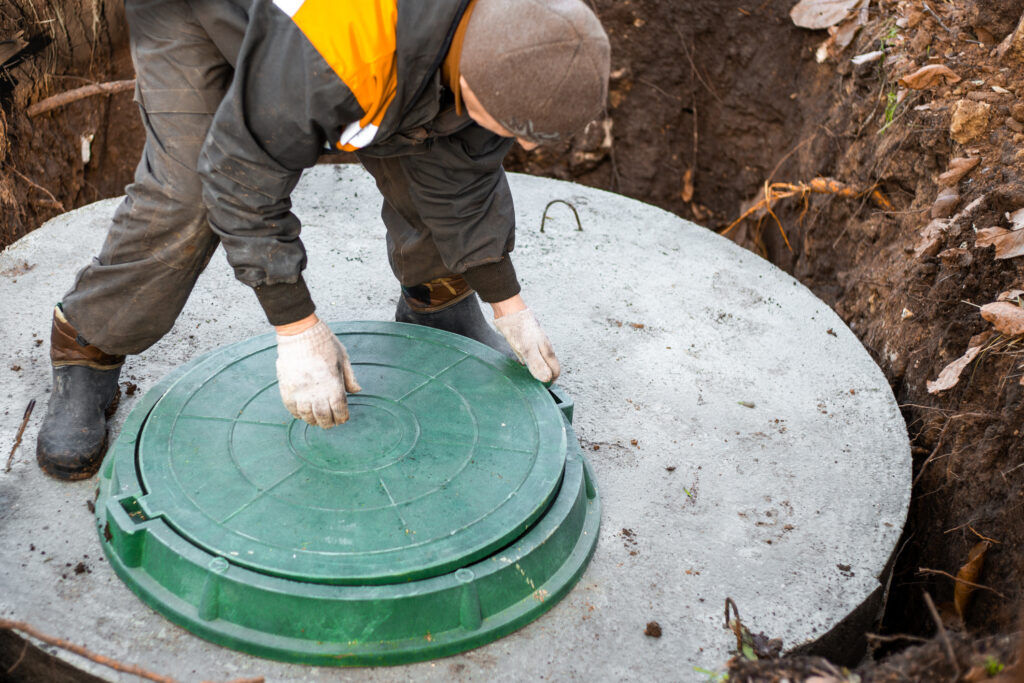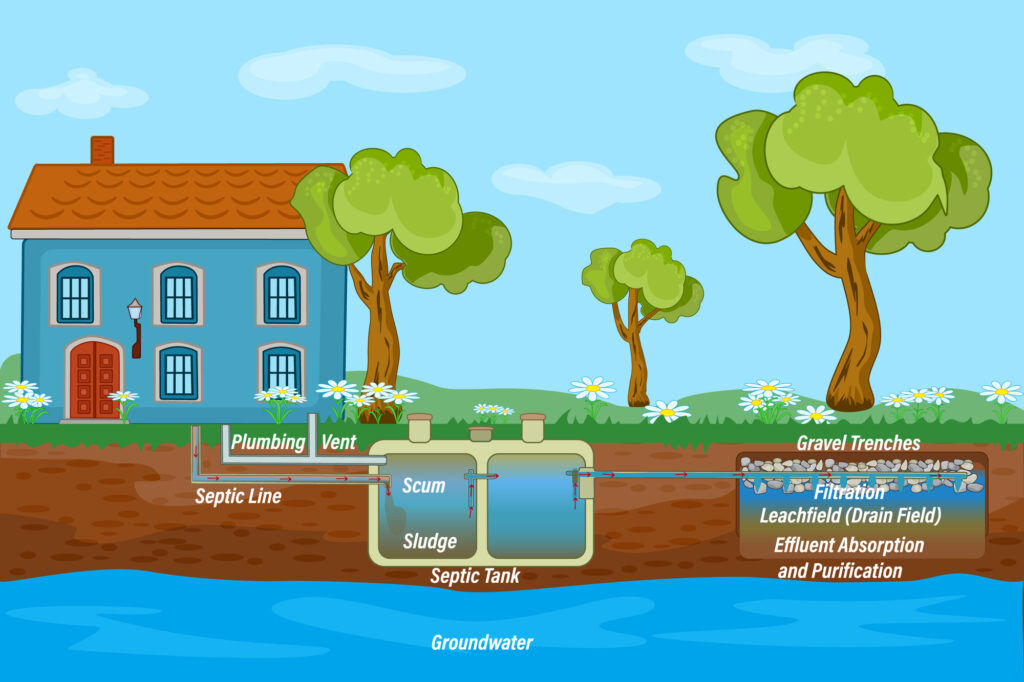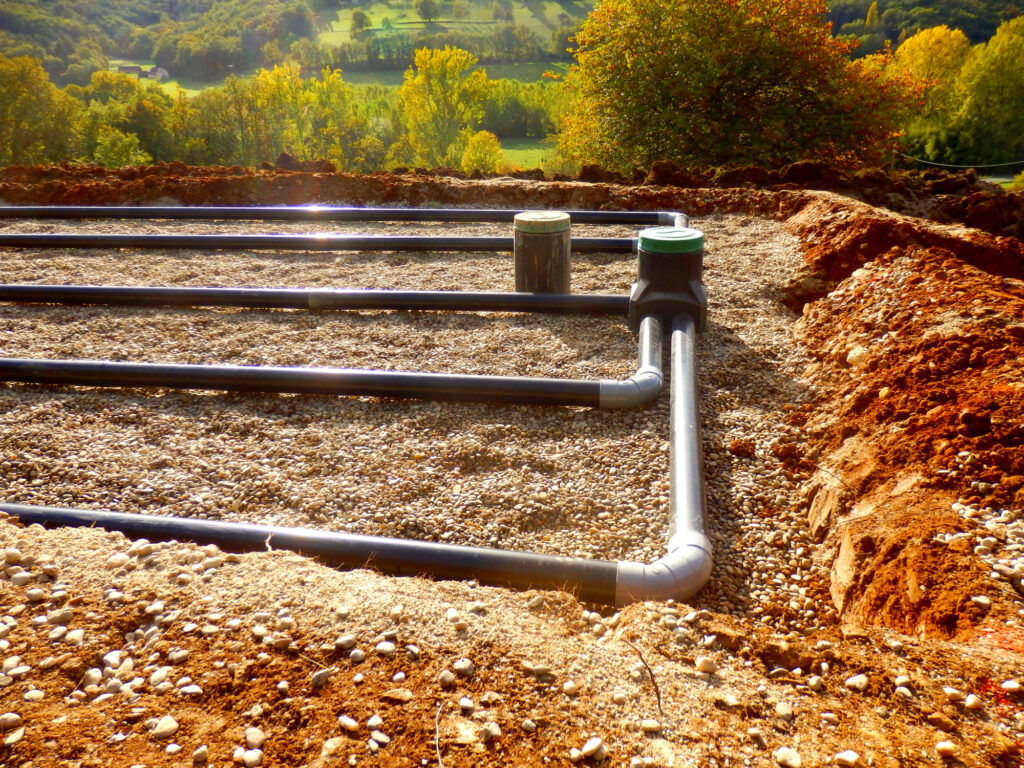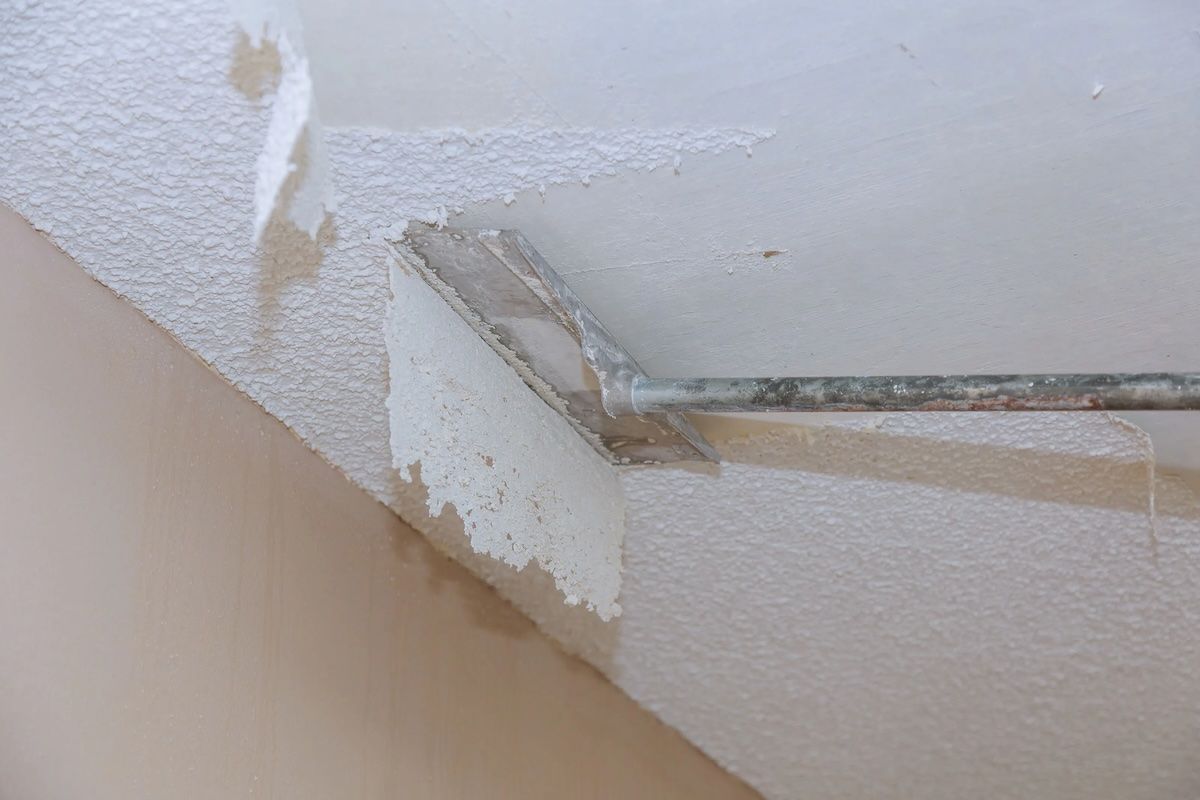- Understanding Septic Systems
- Factors Affecting the Cost of a Septic System
- Average Cost of Septic System Installation
- Maintenance and Repair Costs
- Factors to Consider Before Installing a Septic System
- Alternatives to Traditional Septic Systems
- Financing Options and Homeowner Insurance
- Choosing the Right Septic System Company
How Much Does a Septic System Cost?
Click here to browse our Real Estate Agent Directory and contact top-rated agents in your area!

A septic system is essential to many residential properties, providing efficient wastewater management. When considering the cost of a septic system, several factors come into play, such as the system’s size, type of tank, and location.
Installation costs can vary significantly. Maintenance and repairs are also important considerations. It’s crucial to evaluate property suitability, hire professionals, and obtain necessary permits.
Alternative systems, financing options, and selecting the right company are additional factors to explore. Understanding the cost and factors involved is crucial when planning a septic system.
From many years of experience as a Realtor, many people don’t know what it takes to maintain a septic tank system properly. Unfortunately, a lack of understanding can lead to a considerable expense.
The cost of a septic system can run anywhere from $5000-$50,000. Many factors will influence how much you will spend on replacement.
Understanding Septic Systems
Septic systems are essential to residential properties, providing a decentralized wastewater treatment solution. The primary function of a septic system is to treat and dispose of household wastewater when there is no access to a centralized sewer system.
You will learn about the basics of septic systems, including what they are, the different types available, and how they work.
What is a Septic System?
A septic system is an underground wastewater treatment system that consists of two main components: a septic tank and a drain field. The septic tank is a large, watertight container made of concrete, plastic, or fiberglass materials.
It treats wastewater from toilets, sinks, showers, and other household drains.
Types of Septic Systems
Several types of septic systems are available, each designed to meet specific property and environmental conditions. The most common styles include:
- Conventional Gravity System: This is the traditional system that relies on the force of gravity to move wastewater from the house to the tank and then to the drain field.
- Pressure Distribution System: In this design, a pump distributes wastewater evenly from the septic tank to the drain field.
- Mound System: Mound systems are used in areas with high water tables or shallow soil depths. Wastewater is pumped to an elevated mound of sand and gravel, where it is treated and then gradually released into the soil. You can expect these to be more expensive.
- Aerobic Treatment Unit (ATU): ATUs use oxygen to break down and treat wastewater more efficiently. They are often used when site conditions or regulations require advanced treatment.
How Does a Septic System Work?
The functionality involves several processes within the tank and the leach field. When wastewater enters the tank, it undergoes primary treatment, where solid waste settles to the bottom and forms a sludge layer. Lighter particles, such as oil and grease, float to the top, creating a layer of scum.
Effluent, the clarified liquid between the sludge and scum layers, exits the septic tank and flows into the drain field. The drain field, also known as a leach field, is a network of perforated pipes or chambers buried in the soil. The effluent is dispersed into the ground, undergoing further treatment through biological processes and filtration.

Factors Affecting the Cost of a Septic System
Several factors come into play when determining the cost of a septic system.
Size of the System
- The size of the system is a crucial factor influencing the overall cost. Larger designs require more materials and labor to install, leading to higher expenses. The number of bedrooms or occupants in your home often determines the required size of the septic system.
- Properly sizing the system is essential to handle the wastewater volume and prevent failures or backups adequately. A professional septic designer will consider your household’s water usage and the soil’s ability to absorb and treat the wastewater.
- Regular maintenance, such as pumping, is necessary to prevent system overload and prolong lifespan.
Type of Septic Tank
Septic tanks can vary in type, and each type comes with its advantages and costs:
- Concrete tanks: Often the most common choice due to their durability and longevity. They can withstand ground pressure and have a lifespan of about 40 years.
- Plastic tanks: Lightweight and more accessible to install, but they may have a limited lifespan and require more frequent maintenance.
- Fiberglass tanks: Highly resistant to corrosion but may be more expensive upfront.
- Steel tanks: Less common due to their susceptibility to corrosion. They may require additional protective coatings and regular maintenance.
Location and Soil Conditions
The location and soil conditions of your property significantly impact the installation and price of a septic system:
- Accessibility: If your property has limited access, such as steep slopes or challenging terrain, additional excavation and installation efforts may be required, resulting in higher costs.
- Soil type and condition: The soil’s ability to absorb and treat wastewater is crucial for adequate function. Soil tests and evaluations are necessary to determine if special treatment or additional components, such as drainage beds or mound systems, are required.
- Local regulations: Different areas may have specific rules and codes for installations. Permits and inspections will be necessary, which can add to the overall cost.
Considering these factors will help you understand the variables that contribute to the expense of a septic system installation.
Average Cost of Septic System Installation
Installing a septic system involves various costs that are important to consider. Let’s break down the installation costs, labor costs, permit fees, and additional components and upgrades.
Breakdown of Installation Costs
Home Advisor says the average cost of septic system installation is a little over $7000, but remember that this can vary depending on several factors. The cost breakdown includes purchasing and installing the septic tank, sewer line, distribution box, drain field, and pump. It’s important to note that the prices of these components may vary based on the type and size of the system.
Frankly, the average cost seems absurdly low to me. I’ve been involved with numerous septic system replacements over the years; not a single one was under $10,000. Most were between $15,000-$30,000. This is partially due to the rough terrain of Massachusetts. However, this is a significant difference.
Labor Costs and Permit Fees
Along with the cost of materials, labor costs are a significant factor in the total installation expenses. Hiring professionals to install the system properly ensures proper functioning and compliance with local regulations.
The labor costs typically cover excavation, tank placement, pipe connection, and system testing. Additionally, several local jurisdictions require installation permits, which can add to the overall cost.
Additional Components and Upgrades
Depending on your specific needs and local regulations, additional components and upgrades may impact the installation cost. These include advanced treatment technologies, dosing tanks, alternative leach field materials, and high-efficiency pumps.
It’s essential to consult with a professional to determine if additional components or upgrades are necessary and to factor in their cost when estimating the total installation expenses.
Maintenance and Repair Costs
Maintaining and repairing a septic system is essential to ensure its proper functioning and longevity. Scheduled pumping and inspections, addressing common issues, and considering system upgrades or replacements are vital.
Pumping and Inspections
Regular pumping and inspections are necessary to prevent failures and costly repairs. It is recommended to have a professional pump the tank every three to five years, depending on household size and water usage. This helps remove accumulated solids and prevents clogs or backups.
Repairing Common Septic System Issues
Common septic system issues include clogged drain fields, damaged pipes, and malfunctioning components. Repairing these issues promptly is crucial to avoid further damage and costly repairs. Hiring a professional septic contractor can help diagnose the problem accurately and provide effective solutions.
Pro tip: When you have a septic system and a well, it is vital to have a well inspection. If your system fails, you need to ensure no groundwater contamination.
Costs of System Upgrade or Replacement
Over time, a septic system may require upgrades or replacements due to aging components or changes in household usage. Upgrading to advanced treatment technologies or larger tank sizes can improve system efficiency and accommodate increased water usage.
The cost of system upgrades or replacements varies depending on the scope of work and chosen system alternatives.
Proper maintenance and timely repairs can prolong the lifespan and minimize overall costs. It is crucial to consult with a professional contractor to assess the specific maintenance needs and address any potential issues promptly.
Factors to Consider Before Installing a Septic System
Before installing a septic system, there are several important factors to consider. These factors can significantly affect the system’s performance, longevity, and cost. Here are some key points to keep in mind:
Evaluating Your Property and Water Usage
One crucial step is to evaluate your property and determine the appropriate size and type of design needed. Consider your home’s number of bedrooms or occupants and water usage patterns. Observe any additional water-intensive activities such as irrigation or laundry.
Understanding your property’s soil composition and drainage capabilities is essential in determining the optimal system design.
Importance of Hiring a Professional
When it comes to septic system installation, hiring a professional is highly recommended. They have the expertise to assess your property, conduct soil tests, and design a system that meets local regulations and requirements.
Professionals can also ensure proper installation, which is crucial for optimal system performance and longevity. While there may be a cost associated with their services, the expertise and peace of mind they provide are invaluable.
Obtaining Permits and Meeting Regulations
Installing a system involves obtaining the necessary permits and complying with local regulations. This ensures that it meets safety and environmental standards. Permits typically require site evaluations, soil testing, and detailed system plans.
It is essential to understand the specific regulations in your area and follow all necessary procedures to ensure a smooth installation process and avoid costly penalties.
You can make informed decisions regarding installing a septic system by carefully considering these factors. This will help ensure your system is appropriately sized, professionally installed, and compliant with local regulations. It will ultimately lead to a reliable and efficient wastewater management system for your property.

Alternatives to Traditional Septic Systems
When it comes to managing wastewater, there are alternatives to traditional septic systems that may be worth considering. These alternative systems offer different approaches to treatment and disposal, providing homeowners with options that suit their specific needs and property conditions.
Aerobic Treatment Units (ATUs)
Aerobic Treatment Units (ATUs) are an alternative to conventional septic systems that utilize oxygen to break down and treat wastewater. These systems introduce air into the treatment process, promoting the growth of bacteria and other microorganisms that efficiently break down organic matter.
ATUs often incorporate additional treatment components, such as disinfection units, to ensure high-quality effluent.
Mound Systems
Mound systems are designed for properties with challenging soil conditions, such as high water tables or shallow bedrock. These systems involve constructing an elevated mound of sand or gravel on top of the natural soil.
Wastewater is dispersed through this mound, which acts as a filtration medium and provides additional treatment before the effluent reaches the underlying soil.
Mound systems can be an effective solution when traditional septic systems are not feasible. If possible, you will want to avoid a mound system. Picture a random mound in the middle of your lawn. It isn’t pretty. Speak to your land surveyor about what else can be done.
Advanced Treatment Technologies
Advanced treatment technologies encompass a range of innovative systems that go beyond traditional designs regarding treatment efficiency and capabilities. These technologies can include constructed wetlands, sand filters, membrane bioreactors, and other specialized treatment units. These systems are often used in environmentally sensitive areas or to meet stricter regulatory requirements.
Financing Options and Homeowner Insurance
Financing options and homeowner insurance are crucial in managing the costs and risks associated with septic system installation and maintenance. Exploring different avenues for financing your project is essential, as well as understanding the insurance coverage available to protect your investment.
Home Improvement Loans and Grants
You may qualify for various home improvement loans and grants. These financial options can help offset the upfront costs of installation and repairs. Programs like the Federal Housing Administration (FHA) Title I loans, Department of Agriculture (USDA) Rural Repair and Rehabilitation Grants, and state-level assistance programs offer financial support to eligible homeowners.
Researching the specific requirements and application process for each loan or grant program is essential. Some programs may have income limits or detailed guidelines for property eligibility. Gather all the necessary documentation and consult the appropriate agencies to determine your eligibility.
Homeowner Insurance with Septic System Coverage
Securing homeowner insurance with septic system coverage is another essential aspect of protecting your investment. Standard homeowner insurance policies often exclude coverage for septic system issues, leaving homeowners vulnerable to potentially costly repairs and damages.
Owning private septics could be considered a hidden cost of buying when you’ve never had one before.
When exploring homeowner insurance options, it’s crucial to inquire about specific coverage. Some insurance companies offer endorsements or riders that can be added to your policy to cover septic system repairs, replacements, and related damages. These endorsements typically cover tank leaks, pipe breaks, and damage caused by backups or seepage.
Before selecting an insurance provider, compare quotes and review the coverage details carefully. Consider coverage limits, deductibles, and exclusions to ensure adequate protection for your septic system.
Remember, financing options and homeowner insurance with coverage are vital tools to mitigate financial risks associated with installation and maintenance.
Take the time to explore different options, assess eligibility requirements, and choose the most suitable financing option and insurance coverage to safeguard your investment.
Considering the potential expense of an older system, many buyers will opt for a new house instead.
Choosing the Right Septic System Company
Choosing the right company for the job is crucial when installing a septic system. Researching local companies and evaluating their experience and reputation is essential in making an informed decision.
Here are some key factors to consider:
Researching Local Companies
Start by researching local septic companies in your area. Look for firms that have been in business for a significant amount of time and have a good track record. Check their websites for information on their services, experience, and customer testimonials. It is also helpful to ask for recommendations from neighbors, friends, or local community forums.
Please list potential companies and gather as much information as possible about their expertise and the types of septic systems they specialize in. Look for companies with experience working with different types of systems and a deep understanding of local regulations and codes.
Comparing Quotes and Evaluating Experience
Once you have a list of potential companies, contact them and request quotes. When comparing bids, ensure you understand the detailed cost breakdown. This includes the cost of the septic tank, materials, labor, permits, and any additional components or upgrades.
In addition to comparing costs, evaluate the experience of each company. Ask about their previous installations and whether they have experience working with similar properties and soil conditions as yours. A company with a proven track record in installing septic systems in your area is more likely to deliver quality work and handle any challenges.
Take the time to read reviews and customer feedback about each company. This can provide valuable insights into their professionalism, reliability, and customer satisfaction. Look for responsive, communicative businesses willing to address any concerns or questions.
By thoroughly researching and comparing local companies, you can ensure that you choose a reputable establishment that will install your septic system efficiently and effectively.
You can also ask a local real estate agent or attorney for advice. They likely have a list of contractors they have worked with. Best of luck, and feel free to reach out with any questions.





